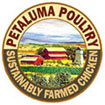Food import bills reach a record high
Soaring
demand for biofuels boosts prices - poorest
countries hardest hit
Washington and Rome, 7 June 2007 - Global
food import bills are increasing, partly
due to soaring demand for biofuels, according
to FAO's latest Food
Outlook report. Global expenditures
on imported foodstuffs look set to surpass
US$400 billion in 2007, almost 5 percent
above the record of the previous year.
Rising prices of imported coarse grains
and vegetable oils - the commodity groups
that feature most heavily in biofuel production
- account for the bulk of the increase.
Import bills for these commodities are forecast
to rise by as much as 13 percent from 2006,
the report said.
More expensive feed ingredients will lead
to higher prices for meat and dairy products,
raising expenditures on imports of those
commodities. In several cases, such as for
meat and rice, larger world purchases are
likely to drive import bills up.
In the case of sugar, generally high and
volatile prices could lead to smaller import
volumes, which is likely to result in a
drop in the cost of global sugar imports,
the report said.
Record-high international freight rates
have also affected the import value of all
commodities, putting additional pressure
on countries' abilities to cover their food
import bills.
Poor pay more
Developing countries as a whole are anticipated
to face a 9 percent increase in overall
food import expenditures in 2007. The more
economically vulnerable countries are forecast
to be most affected, with total expenditures
by low-income food-deficit (LIFDC) and least
developed countries (LDCs) expected to rise
by 10 percent from last year.
"The food import basket for the least
developed countries in 2007 is expected
to cost roughly 90 percent more than it
did in 2000," said FAO economist Adam
Prakash. "This is in stark contrast
to the 22 percent growth in developed country
import bills over the same period."
Production up, but so is demand
World cereal production in 2007 is forecast
to reach 2 125 million metric tons, up 6
percent from the reduced level in 2006 and
higher than FAO's previous forecast in May.
"The prospect of a strong recovery
in global cereal production in 2007 is a
positive development, but total supplies
will still be barely adequate to meet the
expected rise in demand, not only from the
traditional food and feed sectors but in
particular from the fast-growing biofuels
industry," said Abdolreza Abbassian,
one of the authors of the report. "This
means prices for most cereals are likely
to remain high in the coming year."
FAO's tentative forecast for rice production
this year stands at around 633 million metric
tons, matching last year's record level,
but with production still running short
of consumption. Global rice reserves are
forecast to shrink and higher price levels
are anticipated.
Global cassava production in 2007 could
surpass last year's record level, due largely
to measures to increase utilization of the
crop in the larger producing countries,
especially for industrial usage, including
ethanol production.
Oilseeds
Oilseeds and meal prices have continued
to rise, largely due to surging feed grain
prices. Unusually high maize prices are
dragging up soybean prices as the two commodities
are competing in both the feed and energy
markets. First forecasts for the 2007/08
marketing season suggest that the steady
growth in global oilseed production could
come to a halt, however, as maize cultivation
is likely to expand at the expense of soybeans.
Meat and dairy
Increased consumer confidence, following
a reduced incidence of animal disease outbreaks
in the past year, should result in a recovery
in meat demand in developing countries in
2007, the report said. Global meat exports
are anticipated to increase by 3.8 percent
as trade bans are gradually lifted and markets
return to more normal patterns.
Poultry prices have recovered after declining
by 18 percent in early 2006, mainly because
of outbreaks of avian influenza. By March
2007, export prices in the United States
and Brazil, which together supply 70 percent
of global trade, increased by 20 percent
and 14 percent, respectively, from their
2006 annual averages.
FAO's meat price index has significantly
recovered from a low in 2006 and, in March
2007, stood 7.6 percent higher than in March
2006. Moreover, rising feed prices are putting
further upward pressure on meat prices,
according to the report.
Prices of dairy products are currently at
historically high levels. The FAO price
index of traded dairy products has risen
by 46 percent since November 2006. International
prices for milk powders have increased most,
as stocks in the European Union have disappeared.
The outlook for 2007 is for stronger growth
in global milk supply, which may increase
by 2.7 percent, sustained largely by expansion
in those countries more responsive to international
prices. Drought in Australia, suspension
of milk powder exports by India, and Argentina's
export taxes are restraining export supply
in the short term. However, EU dairy policy
reform is changing the structure of international
markets as its export market share declines,
creating opportunities for emerging exporters,
the report said.
For more information on the work of FAO:
www.fao.org
|












